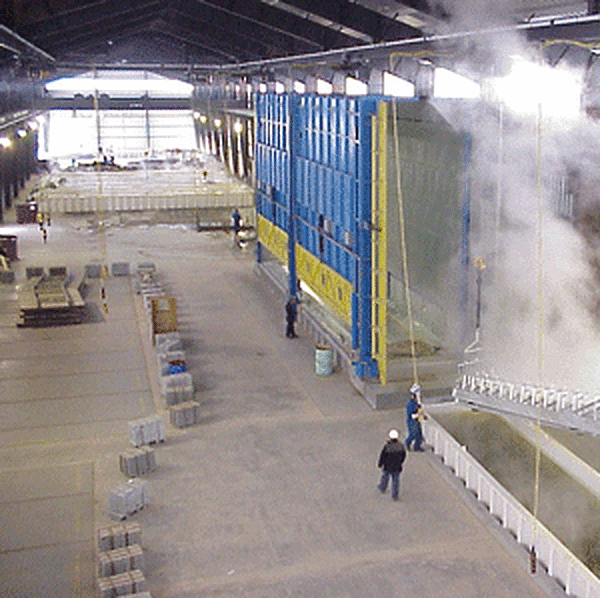Chromate Quenching HDG Rebar
How does chromate quenching protect galvanized rebar from concrete?

Chromate solutions are applied to hot-dip galvanized rebar to prevent a reaction that can occur between the zinc metal of the galvanized coating and the wet concrete. When embedding HDG in concrete, you should be aware of the reaction between galvanized rebar and wet concrete, why the reaction is a concern, and how chromates prevent the reaction from occurring. When galvanized rebar is added to concrete, a reinforced concrete system is created. The rebar strengthens the concrete. The bond strength of the rebar to the concrete is critical for developing the overall strength of the reinforced concrete system. When cement is mixed with water to create concrete, calcium hydroxide is produced. The wet concrete is then poured over galvanized rebar to create a reinforced concrete system.
The calcium hydroxide from the concrete then reacts with the zinc metal of the galvanized coating to produce calcium hydroxyzincate and hydrogen. This reaction will continue until the concrete sets or the zinc on the coating surface all reacts with the calcium hydroxide. The concern in the reaction between wet concrete and galvanized steel is hydrogen evolution. Hydrogen can create pores and voids in the concrete making the concrete unstable. Chromates can prevent the reaction between the galvanized coating and the wet concrete, which thereby decreases or eliminates the evolution of hydrogen. Solutions with a chromate content of 100-200 ppm (equivalent to 50-100 ppm of chromium six), have been shown to adequately prevent the reaction between galvanized rebar and wet concrete.
In addition to quenching galvanized rebar in a chromate solution, there are other ways to achieve the required level of chromates necessary for preventing the reaction between wet concrete and galvanized rebar. Some types of cement naturally contain the necessary amounts of chromium. In addition, chromium can be added directly to the concrete mix to achieve the necessary level of chromates. It is important to note some studies have shown concerns about hydrogen evolution are not as relevant as once thought. One study showed hydrogen evolution occurs for a much shorter duration of time than initially thought, which means less hydrogen evolution.
© 2025 American Galvanizers Association. The material provided herein has been developed to provide accurate and authoritative information about after-fabrication hot-dip galvanized steel. This material provides general information only and is not intended as a substitute for competent professional examination and verification as to suitability and applicability. The information provided herein is not intended as a representation or warranty on the part of the AGA. Anyone making use of this information assumes all liability arising from such use.

